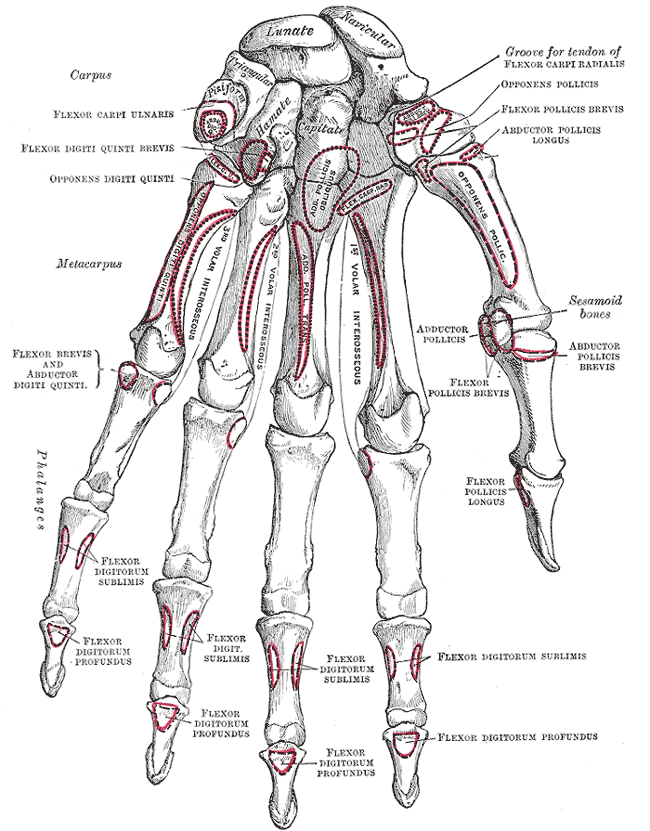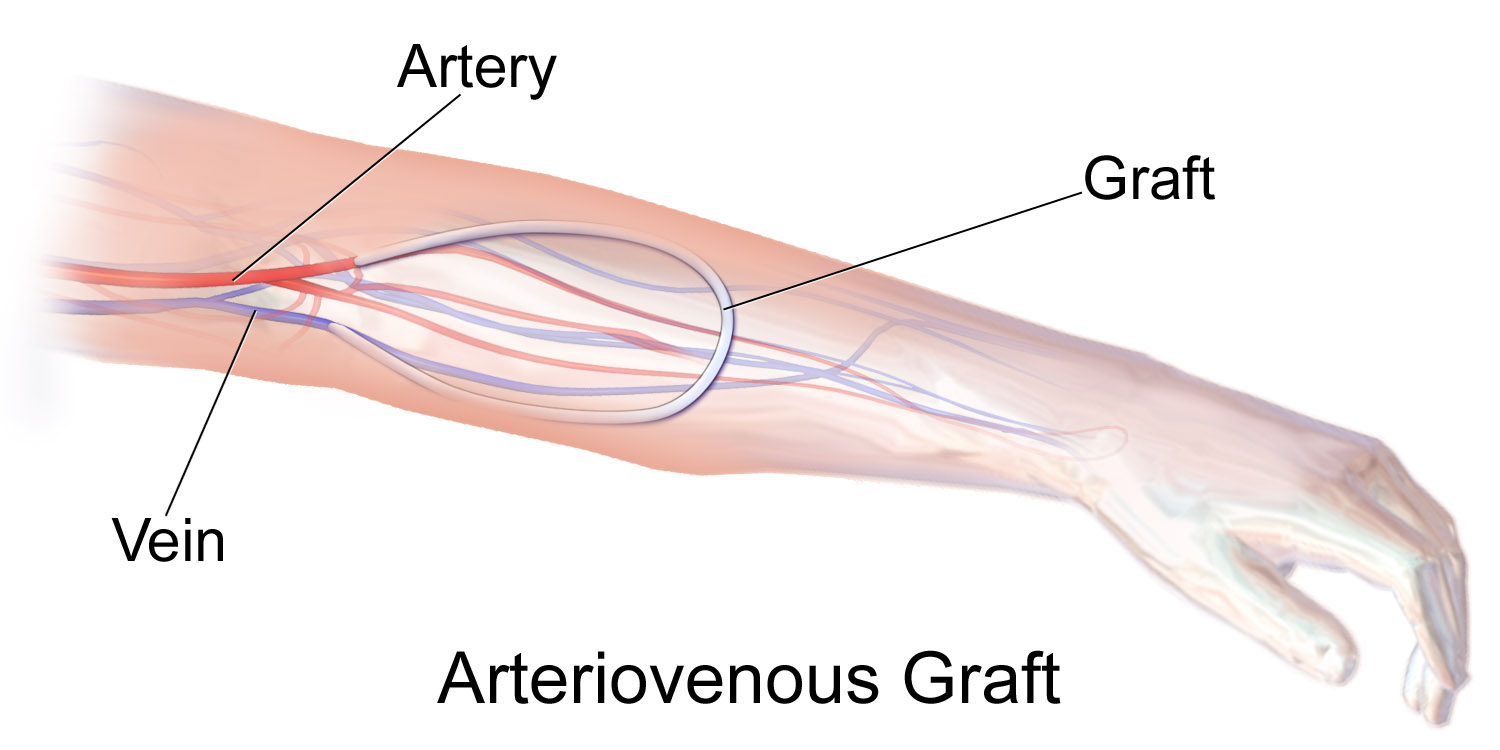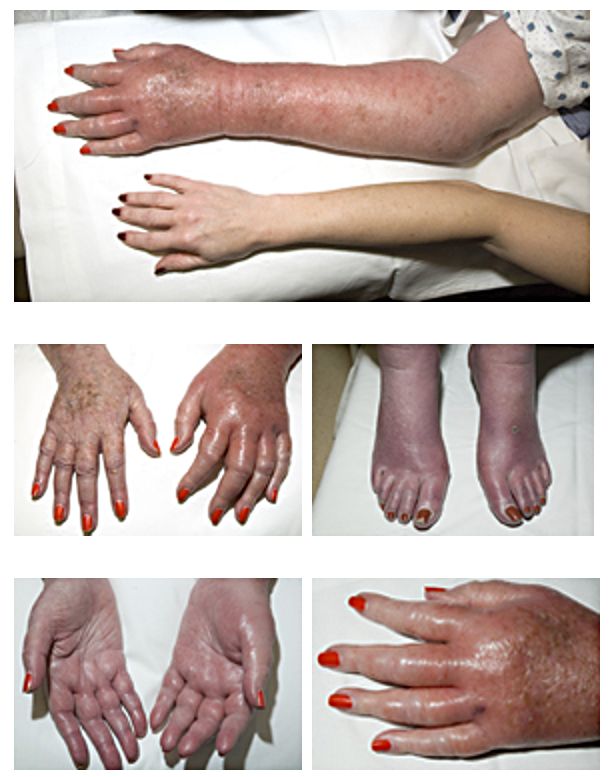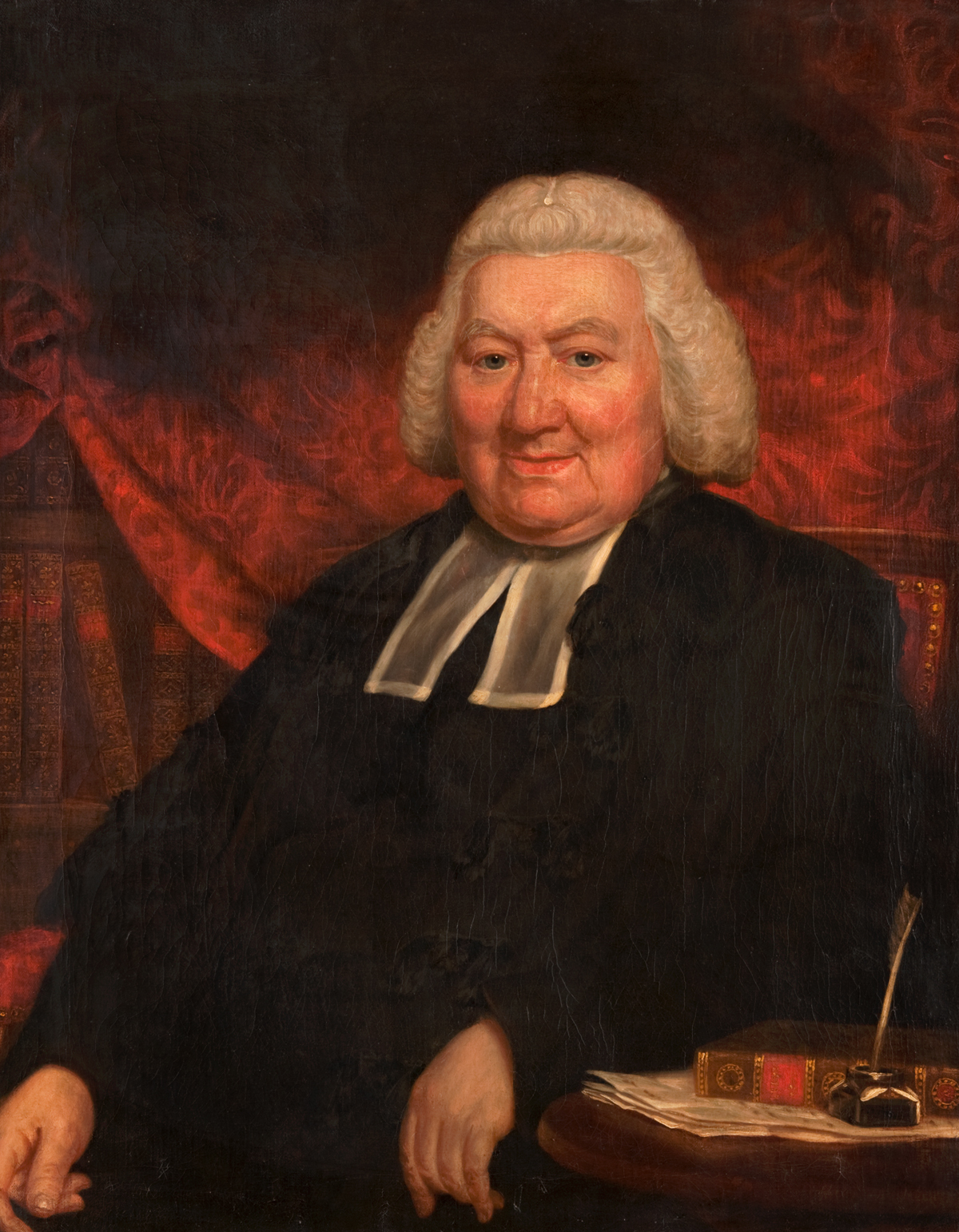|
Leriche Syndrome
In medicine, aortoiliac occlusive disease is a form of central artery disease involving the blockage of the abdominal aorta as it transitions into the common iliac arteries. Signs and symptoms Classically, it is described in male patients as a triad of the following signs and symptoms: # claudication of the buttocks and thighs # absent or decreased femoral pulses # erectile dysfunction Diagnosis The physical examination usually shows weakened femoral pulses and a reduced ankle-brachial index. The diagnosis can be verified by color duplex scanning, which reveals either a peak systolic velocity ratio ≥2.5 at the site of stenosis and/or a monophasic waveform. MRA and multidetector CTA are often used to determine the extent and type of obstruction. Another technique is digital subtraction angiography which allows verification of the diagnosis and endovascular treatment in a single session. Angiography provides important information regarding the perfusion and patency of distal ... [...More Info...] [...Related Items...] OR: [Wikipedia] [Google] [Baidu] |
Gray's Anatomy
''Gray's Anatomy'' is a reference book of human anatomy written by Henry Gray, illustrated by Henry Vandyke Carter and first published in London in 1858. It has had multiple revised editions, and the current edition, the 42nd (October 2020), remains a standard reference, often considered "the doctors' bible". Earlier editions were called ''Anatomy: Descriptive and Surgical'', ''Anatomy of the Human Body'' and ''Gray's Anatomy: Descriptive and Applied'', but the book's name is commonly shortened to, and later editions are titled, ''Gray's Anatomy''. The book is widely regarded as an extremely influential work on the subject. Publication history Origins The English anatomist Henry Gray was born in 1827. He studied the development of the endocrine glands and spleen and in 1853 was appointed Lecturer on Anatomy at St George's Hospital Medical School in London. In 1855, he approached his colleague Henry Vandyke Carter with his idea to produce an inexpensive and access ... [...More Info...] [...Related Items...] OR: [Wikipedia] [Google] [Baidu] |
Vascular Bypass
A vascular bypass is a surgical procedure performed to redirect blood flow from one area to another by reconnecting blood vessels. Often, this is done to bypass around a diseased artery, from an area of normal blood flow to another relatively normal area. It is commonly performed due to inadequate blood flow (ischemia) caused by atherosclerosis, as a part of organ transplantation, or for vascular access in hemodialysis. In general, someone's own vein (autograft) is the preferred graft material (or conduit) for a vascular bypass, but other types of grafts such as polytetrafluoroethylene (Teflon), polyethylene terephthalate (Dacron), or a different person's vein (allograft) are also commonly used. Arteries can also serve as vascular grafts. A surgeon sews the graft to the source and target vessels by hand using surgical suture, creating a surgical anastomosis. Common bypass sites include the heart (coronary artery bypass surgery) to treat coronary artery disease, and the legs ... [...More Info...] [...Related Items...] OR: [Wikipedia] [Google] [Baidu] |
Vascular Diseases
Vascular disease is a class of diseases of the vessels of the circulatory system in the human body, body, including blood vessels – the arteries and veins, and the lymphatic vessels. Vascular disease is a subgroup of cardiovascular disease. Disorders in this vast network of blood and lymph vessels can cause a range of health problems that can sometimes become severe, and fatal. Coronary heart disease for example, is the leading cause of death for men and women in the United States. Types There are several types of vascular disease, including venous diseases, and arterial diseases, and signs and symptoms vary depending on the disease. Those of the arterial system are associated with blood supply to tissues and its obstruction due to blockages or narrowing. In the venous system disorders are often caused by a slow return of blood due to insufficient valves, or to a thrombus, blood clot. Venous disease Most disorders of the veins involve obstruction such as a thrombus or insuffici ... [...More Info...] [...Related Items...] OR: [Wikipedia] [Google] [Baidu] |
Peripheral Arterial Disease
Peripheral artery disease (PAD) is a vascular disorder that causes abnormal narrowing of arteries other than those that supply the heart or brain. PAD can happen in any blood vessel, but it is more common in the legs than the arms. When narrowing occurs in the heart, it is called coronary artery disease (CAD), and in the brain, it is called cerebrovascular disease. Peripheral artery disease most commonly affects the legs, but other arteries may also be involved, such as those of the arms, neck, or kidneys. Peripheral artery disease (PAD) is a form of peripheral vascular disease. Vascular refers to the arteries and veins within the body. PAD differs from peripheral veinous disease. PAD means the arteries are narrowed or blocked—the vessels that carry oxygen-rich blood as it moves from the heart to other parts of the body. Peripheral veinous disease, on the other hand, refers to problems with veins—the vessels that bring the blood back to the heart. The classic symptom is ... [...More Info...] [...Related Items...] OR: [Wikipedia] [Google] [Baidu] |
Claudication
Claudication is a medical term usually referring to impairment in walking, or pain, discomfort, numbness, or tiredness in the legs that occurs during walking or standing and is relieved by rest. The perceived level of pain from claudication can be mild to extremely severe. Claudication is most common in the calves but it can also affect the feet, thighs, hips, buttocks, or arms. The word ''claudication'' comes . Claudication that appears after a short amount of walking may sometimes be described by US medical professionals by the number of typical city street blocks that the patient can walk before the onset of claudication. Thus, "one-block claudication" appears after walking one block, "two-block claudication" appears after walking two blocks, etc. The term ''block'' would be understood more exactly locally but is on the order of 100 meters (328 feet). Types Intermittent vascular Intermittent vascular (or arterial) claudication (Latin: ''claudicatio intermittens'') mos ... [...More Info...] [...Related Items...] OR: [Wikipedia] [Google] [Baidu] |
Hunterian Museum
The Hunterian is a complex of museums located in and operated by the University of Glasgow in Glasgow, Scotland. It is the oldest museum in Scotland. It covers the Hunterian Museum, the Hunterian Art Gallery, the Mackintosh House, the Zoology Museum and the Anatomy Museum, which are all located in various buildings on the main campus of the university in the west end of Glasgow. History In 1783, William Hunter, a Scottish anatomist and physician who studied at the University of Glasgow, died in London. His will stipulated that his substantial and varied collections should be donated to the University of Glasgow. Hunter, writing to William Cullen, stated that they were "to be well and carefully packed up and safely conveyed to Glasgow and delivered to the Principal and Faculty of the College of Glasgow to whom I give and bequeath the same to be kept and preserved by them and their successors for ever... in such sort, way, manner and form as ... shall seem most fit and most cond ... [...More Info...] [...Related Items...] OR: [Wikipedia] [Google] [Baidu] |
Anatomy
Anatomy () is the branch of morphology concerned with the study of the internal structure of organisms and their parts. Anatomy is a branch of natural science that deals with the structural organization of living things. It is an old science, having its beginnings in prehistoric times. Anatomy is inherently tied to developmental biology, embryology, comparative anatomy, evolutionary biology, and phylogeny, as these are the processes by which anatomy is generated, both over immediate and long-term timescales. Anatomy and physiology, which study the structure and function of organisms and their parts respectively, make a natural pair of related disciplines, and are often studied together. Human anatomy is one of the essential basic sciences that are applied in medicine, and is often studied alongside physiology. Anatomy is a complex and dynamic field that is constantly evolving as discoveries are made. In recent years, there has been a significant increase in the use of ... [...More Info...] [...Related Items...] OR: [Wikipedia] [Google] [Baidu] |
Pathophysiology
Pathophysiology (or physiopathology) is a branch of study, at the intersection of pathology and physiology, concerning disordered physiological processes that cause, result from, or are otherwise associated with a disease or injury. Pathology is the medical discipline that describes conditions typically ''observed'' during a disease state, whereas physiology is the biological discipline that describes processes or mechanisms ''operating'' within an organism. Pathology describes the abnormal or undesired condition (symptoms of a disease), whereas pathophysiology seeks to explain the functional changes that are occurring within an individual due to a disease or pathologic state. Etymology The term ''pathophysiology'' comes from the Ancient Greek πάθος (''pathos'') and φυσιολογία (''phisiologia''). History Early Developments The origins of pathophysiology as a distinct field date back to the late 18th century. The first known lectures on the subject were delivered ... [...More Info...] [...Related Items...] OR: [Wikipedia] [Google] [Baidu] |
French People
French people () are a nation primarily located in Western Europe that share a common Culture of France, French culture, History of France, history, and French language, language, identified with the country of France. The French people, especially the native speakers of langues d'oïl from northern and central France, are primarily descended from Roman people, Romans (or Gallo-Romans, western European Celts, Celtic and Italic peoples), Gauls (including the Belgae), as well as Germanic peoples such as the Franks, the Visigoths, the Suebi and the Burgundians who settled in Gaul from east of the Rhine after the fall of the Roman Empire, as well as various later waves of lower-level irregular migration that have continued to the present day. The Norsemen also settled in Normandy in the 10th century and contributed significantly to the ancestry of the Normans. Furthermore, regional ethnic minorities also exist within France that have distinct lineages, languages and cultures such ... [...More Info...] [...Related Items...] OR: [Wikipedia] [Google] [Baidu] |
René Leriche
Henri Marie René Leriche (12 October 1879 – 28 December 1955) was a French vascular surgeon and physiologist. He was a specialist in pain, vascular surgery and the sympathetic trunk. He sensitized many who were mutilated in the first World war, he was the first to be interested in pain and to practice gentle surgery with as little trauma as possible. Two symptoms have the name Algoneurodystrophy and the aortic iliac obliteration. He has trained many students, such as Michael E. DeBakey Michael Ellis DeBakey (September 7, 1908 – July 11, 2008) was an American general surgery, general and cardiovascular surgeon, scientist and medical educator who became Chairman of the Department of Surgery, President, and Chancellor of Baylor ..., Jão Cid dos Santos, :fr:René Fontaine (chirurgien), René Fontaine et Jean Kunlino. Biography He came from a family of Lyonian doctors, his father Ernest Leriche was an ''avoué'' and his mother Anne Chamussy, married to Leriche, belong t ... [...More Info...] [...Related Items...] OR: [Wikipedia] [Google] [Baidu] |
Robert Graham (botanist)
Robert Graham (3 December 1786 – 7 August 1845) was a Scottish physician and botanist. Life Graham was born in Stirling the son of Dr Robert Graham, physician. After studying at Stirling Grammar School he continued first to the University of Glasgow and then to the University of Edinburgh where he graduated around 1806, and completed his MD in 1808. He trained further at St Bartholomew's Hospital, London, where he qualified as a surgeon. He then returned to Scotland to practice at Glasgow Royal Infirmary 1812-3 and 1816–19. In 1816 he began lecturing in botany at the University of Glasgow, taking over from Thomas Brown of Lanfine and Waterhaughs following his resignation. He was a major figure in the creation of Glasgow Botanic Gardens, and was the inaugural Chair of Botany at the Glasgow in 1818. In 1820 he moved to Edinburgh to take up the position of Professor of Botany and Medicine at the University of Edinburgh, a role he continued until 1845. He was also physic ... [...More Info...] [...Related Items...] OR: [Wikipedia] [Google] [Baidu] |
Vascular Bypass
A vascular bypass is a surgical procedure performed to redirect blood flow from one area to another by reconnecting blood vessels. Often, this is done to bypass around a diseased artery, from an area of normal blood flow to another relatively normal area. It is commonly performed due to inadequate blood flow (ischemia) caused by atherosclerosis, as a part of organ transplantation, or for vascular access in hemodialysis. In general, someone's own vein (autograft) is the preferred graft material (or conduit) for a vascular bypass, but other types of grafts such as polytetrafluoroethylene (Teflon), polyethylene terephthalate (Dacron), or a different person's vein (allograft) are also commonly used. Arteries can also serve as vascular grafts. A surgeon sews the graft to the source and target vessels by hand using surgical suture, creating a surgical anastomosis. Common bypass sites include the heart (coronary artery bypass surgery) to treat coronary artery disease, and the legs ... [...More Info...] [...Related Items...] OR: [Wikipedia] [Google] [Baidu] |





